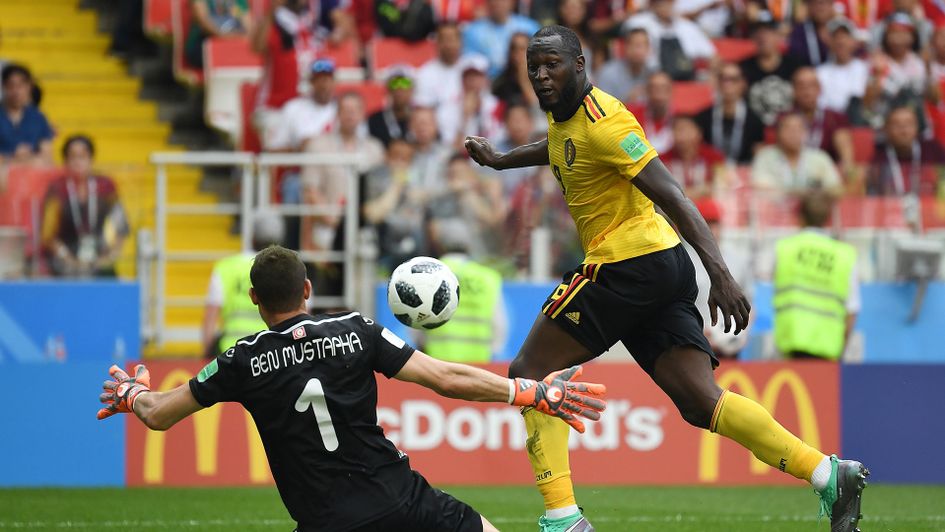As the final round of group matches gets underway, Alex Keble takes a look at the biggest winners and losers from the last week, highlighting how Nigeria and Germany changed tactical strategies to win their respective matches and dissecting exactly what went wrong for Jorge Sampaoli's Argentina.
Team of the round: Nigeria
The most impressive team performance over the last week, certainly in terms of improvement, came from Nigeria, who beat Iceland 2-0 thanks to a dramatic formation switch. Gernot Rohr's unexpected change to a 3-5-2 instantaneously improved his side in virtually all areas of the field; after struggling to unlock the speed of their forwards in an opening defeat to Croatia, Amhed Musa ran riot to put the African side within touching distance of the last 16.
Firstly, the shambolic defensive showing against the Croats was fixed by adding a third central defender into the team. Kenneth Omeruo came in and performed superbly, assisting the second goal while making more clearances (seven) and interceptions (three) than any other player on the pitch.
The 3-5-2 also put Victor Moses in a more familiar – and effective – right wing-back position, thereby freeing up space in the front line for another attacking player. More importantly, Rohr managed to fit in an extra striker (for increased mobility on the counter) without sacrificing a central midfielder or the width of the team. It was the perfect formation for Nigeria, as highlighted by Musa's two breakaway goals.

Manager of the round: Joachim Low
Germany were very poor during the first half of their 2-1 victory over Sweden, and although it took a magnificent last-minute freekick from Toni Kroos to settle the match Joachim Low deserves credit for some crucial half-time changes.
Mario Gomes was brought on for Julian Draxler with Timo Werner pushed out wide, and immediately Germany changed their style of play to counteract Sweden's excellent narrow defensive blockade. Rather than holding aimless possession, as in the first half, they strategically sucked their opponents inwards before quickly switching play with a long diagonal.
Unlike Draxler, who tended to cut inside, Werner was happy to dart to the byline and play clever cut backs. Germany played countless low crosses in the second period thanks to those switches of play, causing chaos in the box and leaving Sweden looking lost as the half progressed. In the end, the pressure told as the Germans earned a freekick down the left channel – the very space they had attacked with gusto throughout the second 45.
Player of the round: Moussa Wague
Honorary mentions here for James Rodriguez and Romelu Lukaku, both of whom were incisive for Colombia and Belgium respectively, but tactically speaking Senegal's 19-year-old right-back Moussa Wague deserves recognition. He was exceptional going forward, proving an invaluable weapon down the right to help counter-balance Senegal's usual dependence on Sadio Mane.
His second-half goal was richly deserved and representative of his attacking performance. Wague burst forward without fear into the Japanese box, lashing home the loose ball from a position most right-backs would not have sprinted into. He completed four key passes and three crosses, more than any other player on the pitch, as part of a man-of-the-match performance.
Pundits will reserve judgement until after he comes face-to-face with James Rodriguez on that flank this week (Wague was often caught too high up the pitch by Japan's Takashi Inui), but early signs suggest Senegal's right-back could be a breakout star.

Worst of the round: Jorge Sampaoli & Argentina
It is hard to recall a more bizarre, chaotic, and utterly formation-less performance in World Cup history. Argentina's supposed 3-4-2-1 was nonsensical, a random smattering of players tripping over each other, falling into pointless cul-de-sacs, and somehow achieving the feat of playing desperately poorly in a U-shape that went around, and thus excluded, Lionel Messi.
Without full-backs or wing-backs, and with Messi inside right forward as Max Meza drifted to the left, it looked like a 3-2-1-4 with two left wingers, no right sided player, and a two-man midfield. Jorge Sampaoli deserves all the blame for re-implementing a system his players are known to dislike, and for doing so at such short notice.
There was one point in the first half when Argentina had six players crammed into a 15-yard diameter space on the halfway line, three forwards in a flat line some 30 yards away, and one player completely AWOL. It was truly remarkable; had they been facing more ruthless opponents Argentina could easily have matched Brazil's 7-1 humbling four years ago.
Follow Sporting Life on social media - find us on Facebook here or tweet @SportingLife
Related World Cup links
- World Cup outright tips
- World Cup Golden Boot tips
- World Cup fixtures & schedule
- World Cup groups & predictions
- World Cup team profiles
- World Cup podcast
- World Cup best bets
- World Cup outsiders to follow
- Elimination predictions
- England's routes to glory
- World Cup Golden Boot contenders
- World Cup Golden Ball contenders
- World Cup Golden Glove contenders
- New world champions in Russia?
- Four £5 flutters in Russia
- World Cup venues in focus
- Full World Cup squad lists
- More free football tips
- Sky Bet's World Cup odds






